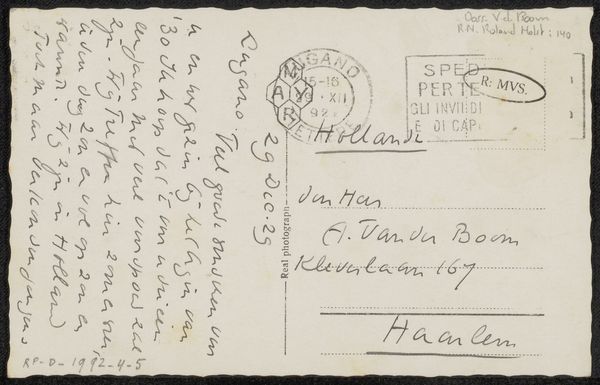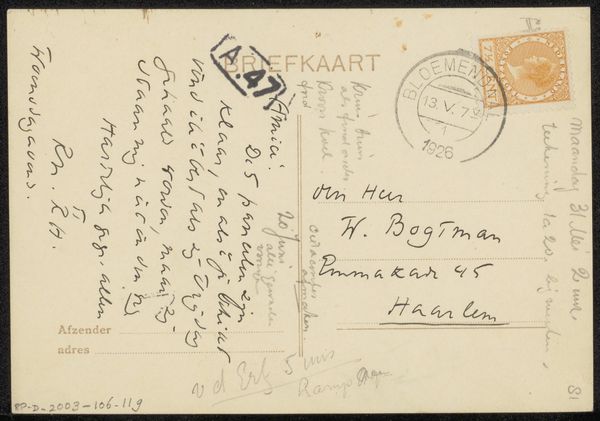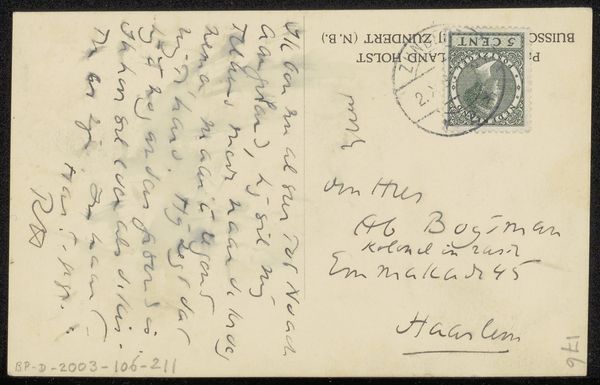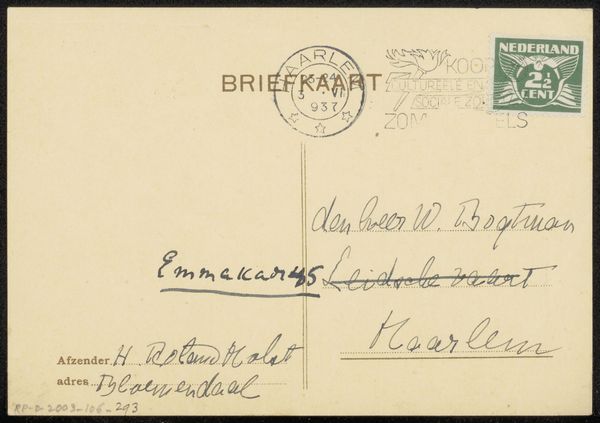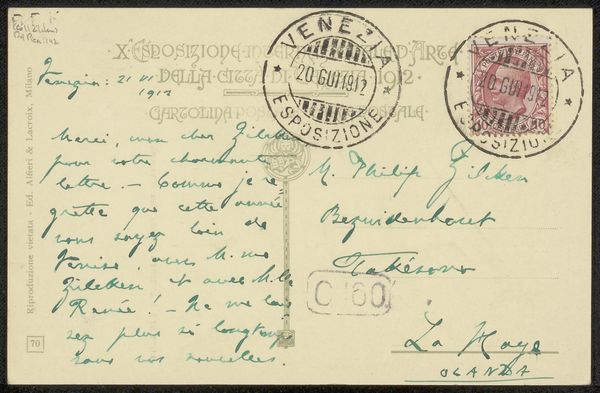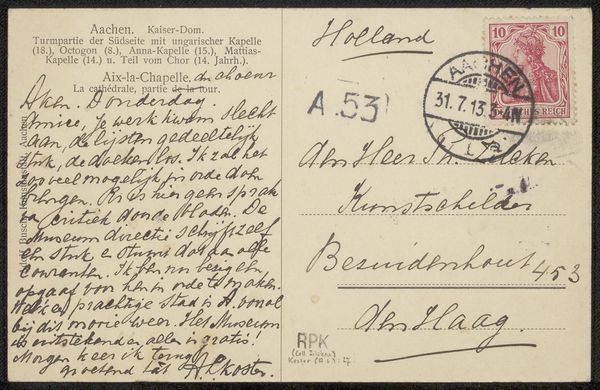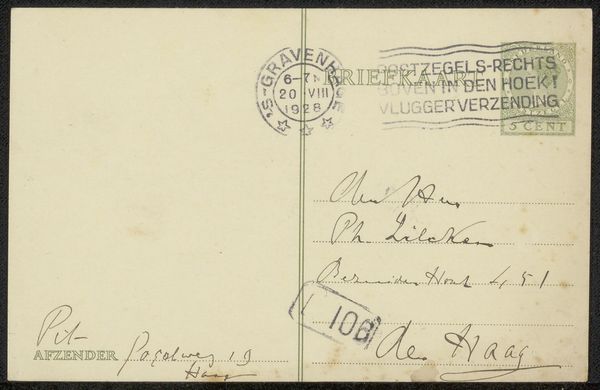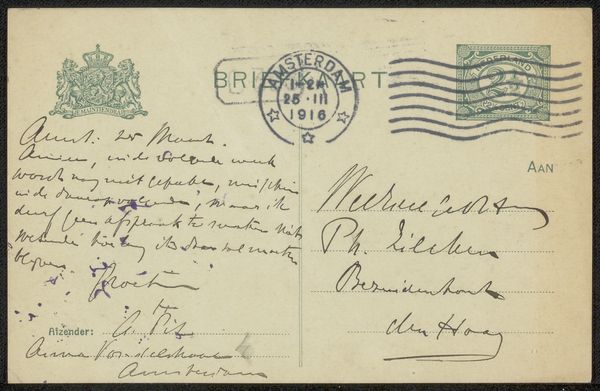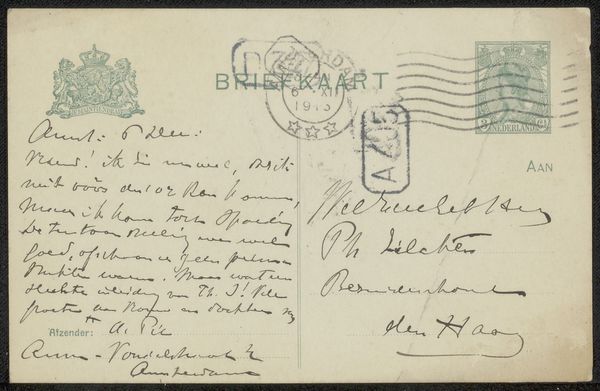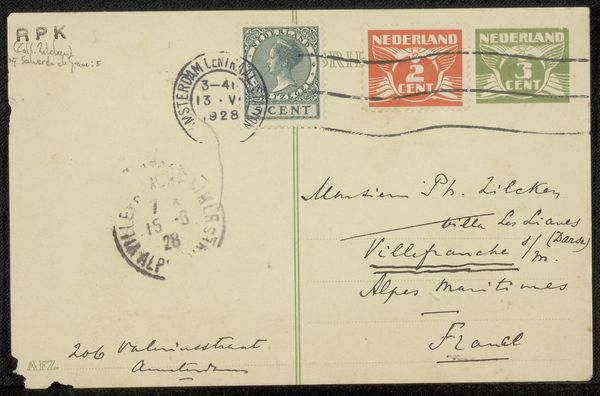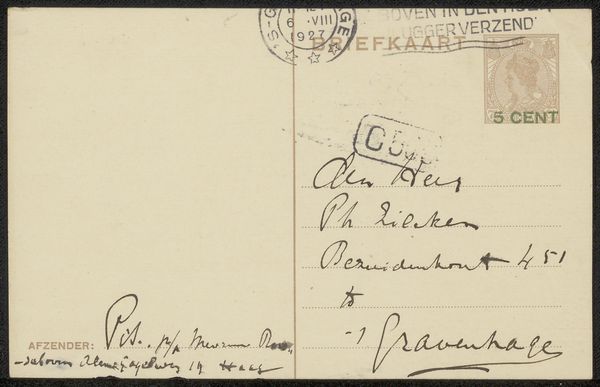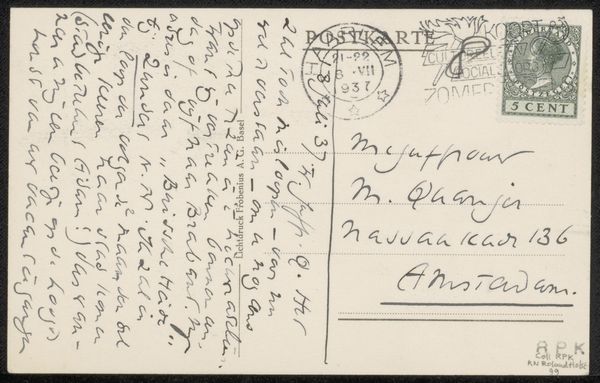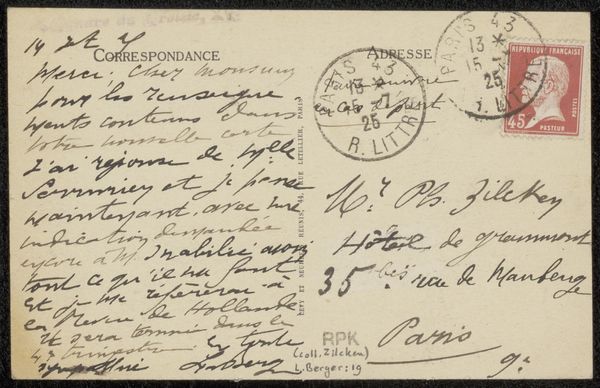
drawing, paper, ink, pen
#
portrait
#
drawing
#
pen drawing
#
hand drawn type
#
paper
#
ink
#
pen
#
calligraphy
Copyright: Rijks Museum: Open Domain
Editor: Here we have Henry Asselin’s “Briefkaart aan Philip Zilcken,” a pre-1927 postcard rendered in ink on paper. I'm immediately struck by the contrast between the very loose, flowing script of the handwritten message and the more rigid, block-like printed text. How do you interpret this interplay of styles? Curator: This interplay foregrounds the materiality of the work. The linear quality of the handwriting underscores its indexical function—a trace of the sender’s hand, unlike the standardized, impersonal print. The visual weight of the varied pen strokes establishes a textural richness across the plane, engaging our vision with more than simply the message. Do you see how the density of ink creates a field of varying intensities? Editor: Yes, the varying thickness of the lines does create a sort of abstract pattern, even without understanding the text. It becomes more about the *visual* impression. The stamp and printed address lines almost act like a grid, anchoring the looser script. Curator: Precisely. These elements contribute to the overall structure of the work. Note also how the artist uses the inherent limitations of the medium - ink on absorbent paper - to create subtle variations in tone and texture. These are not imperfections, but integral aspects of the artwork's aesthetic qualities. Editor: So, it's about seeing the postcard less as a piece of correspondence, and more as an exercise in line, form, and texture. What did you learn by closely studying the lines and textures in relation to structure? Curator: Examining this postcard through a formalist lens allows us to appreciate the conscious manipulation of materials to construct a visually engaging surface. This transforms what might be seen as ephemera into an object of artistic consideration, emphasizing internal relationships, disregarding historical factors to elevate structure over function.
Comments
No comments
Be the first to comment and join the conversation on the ultimate creative platform.
